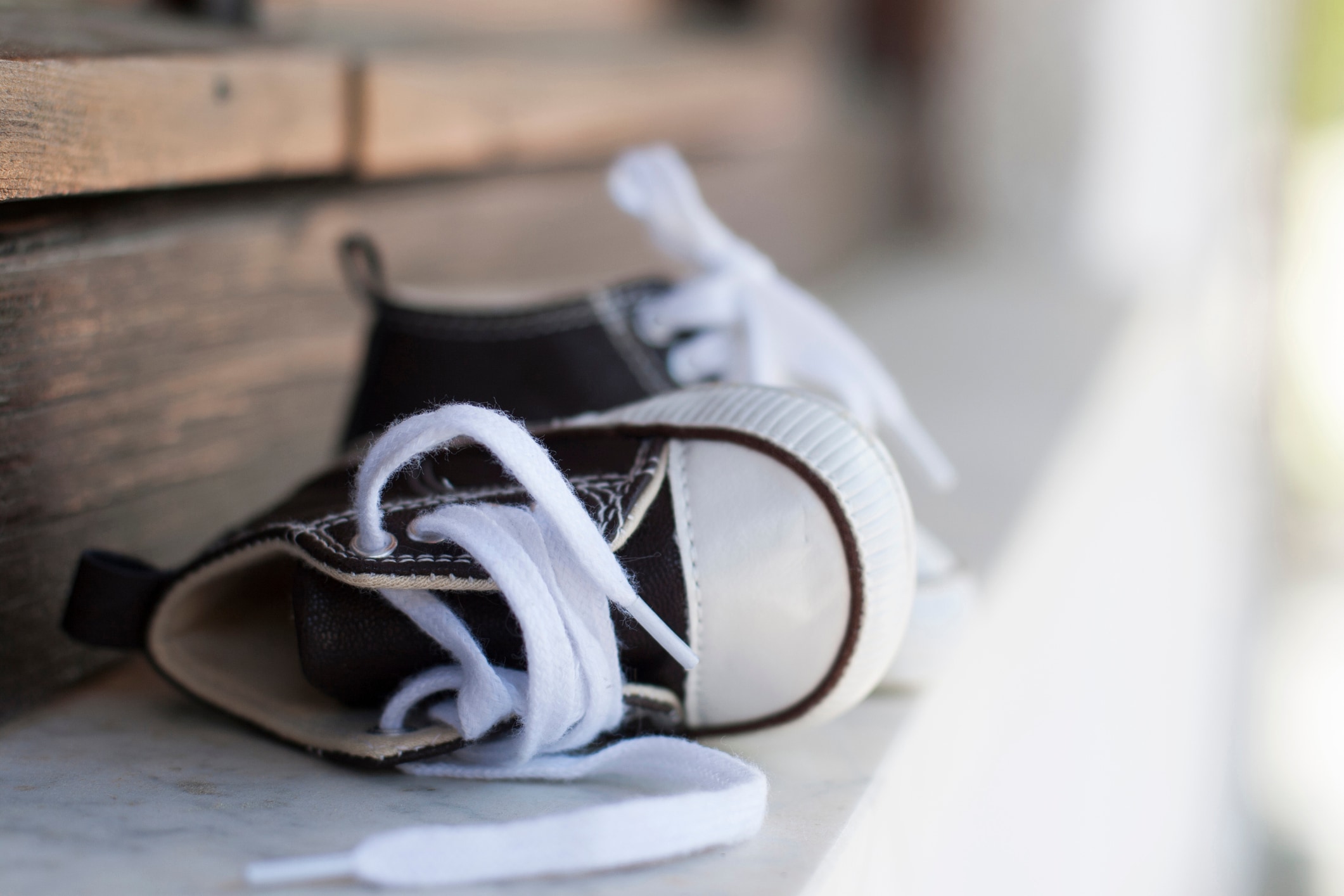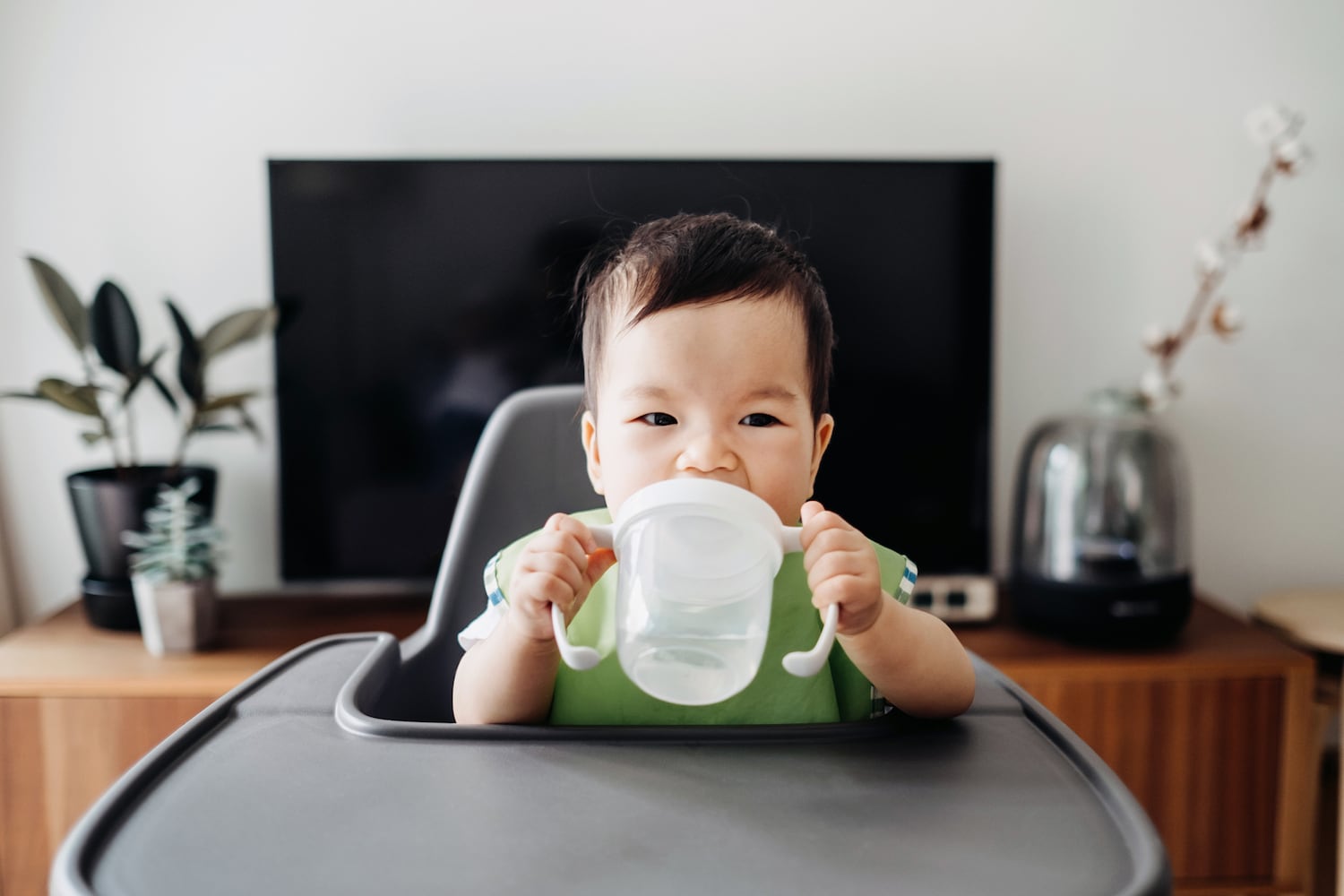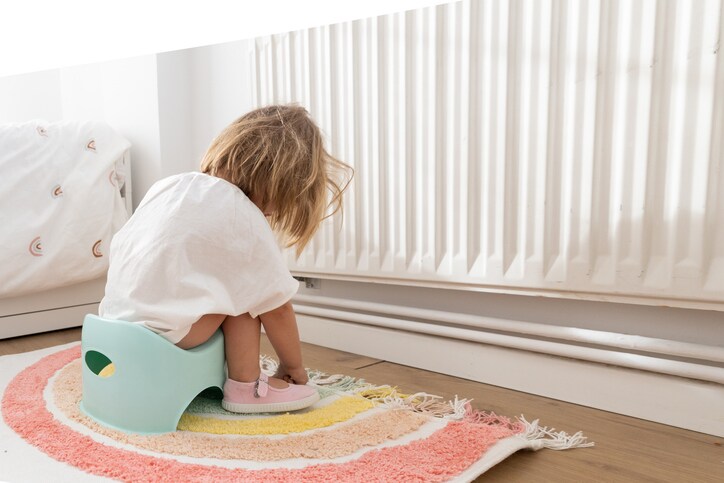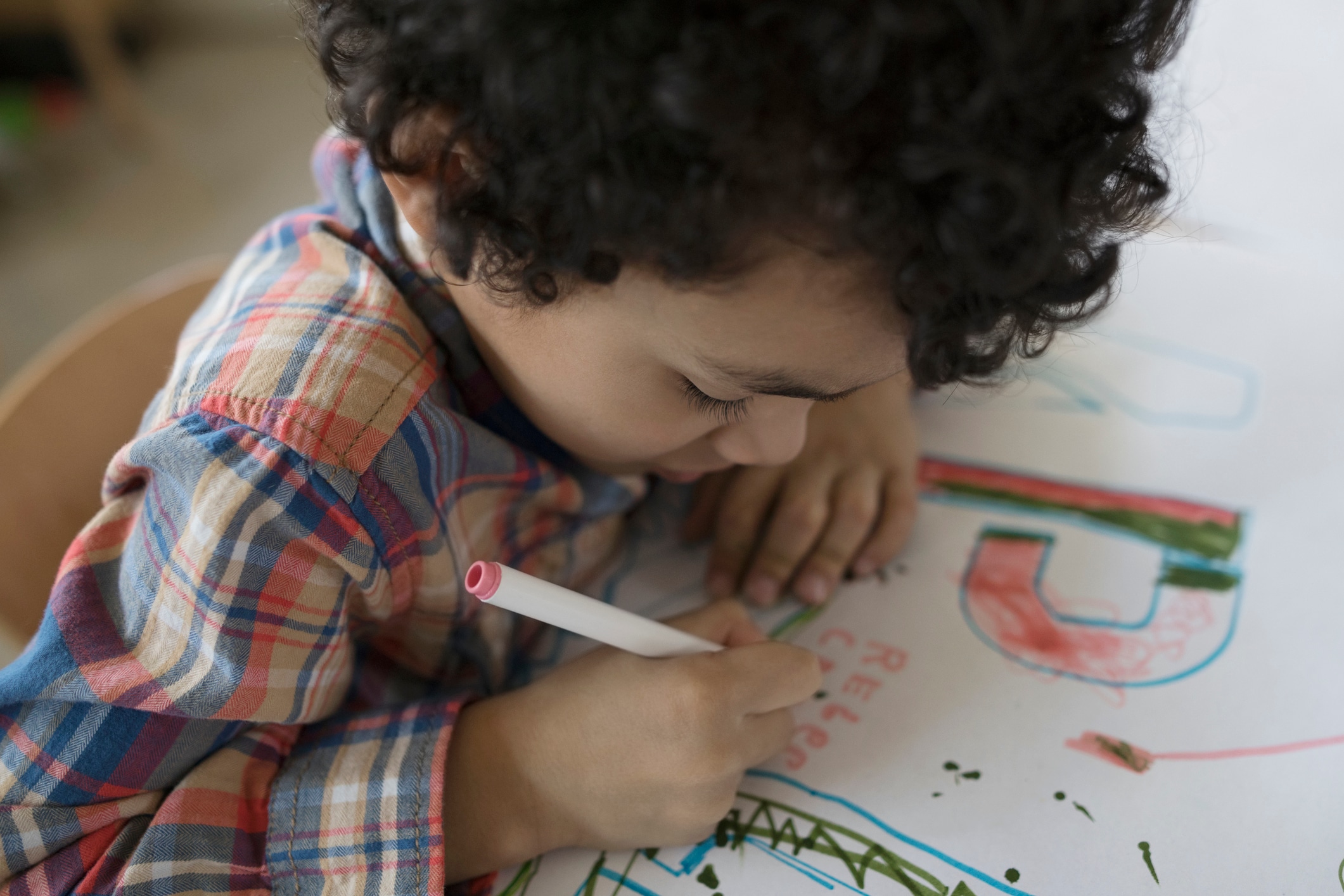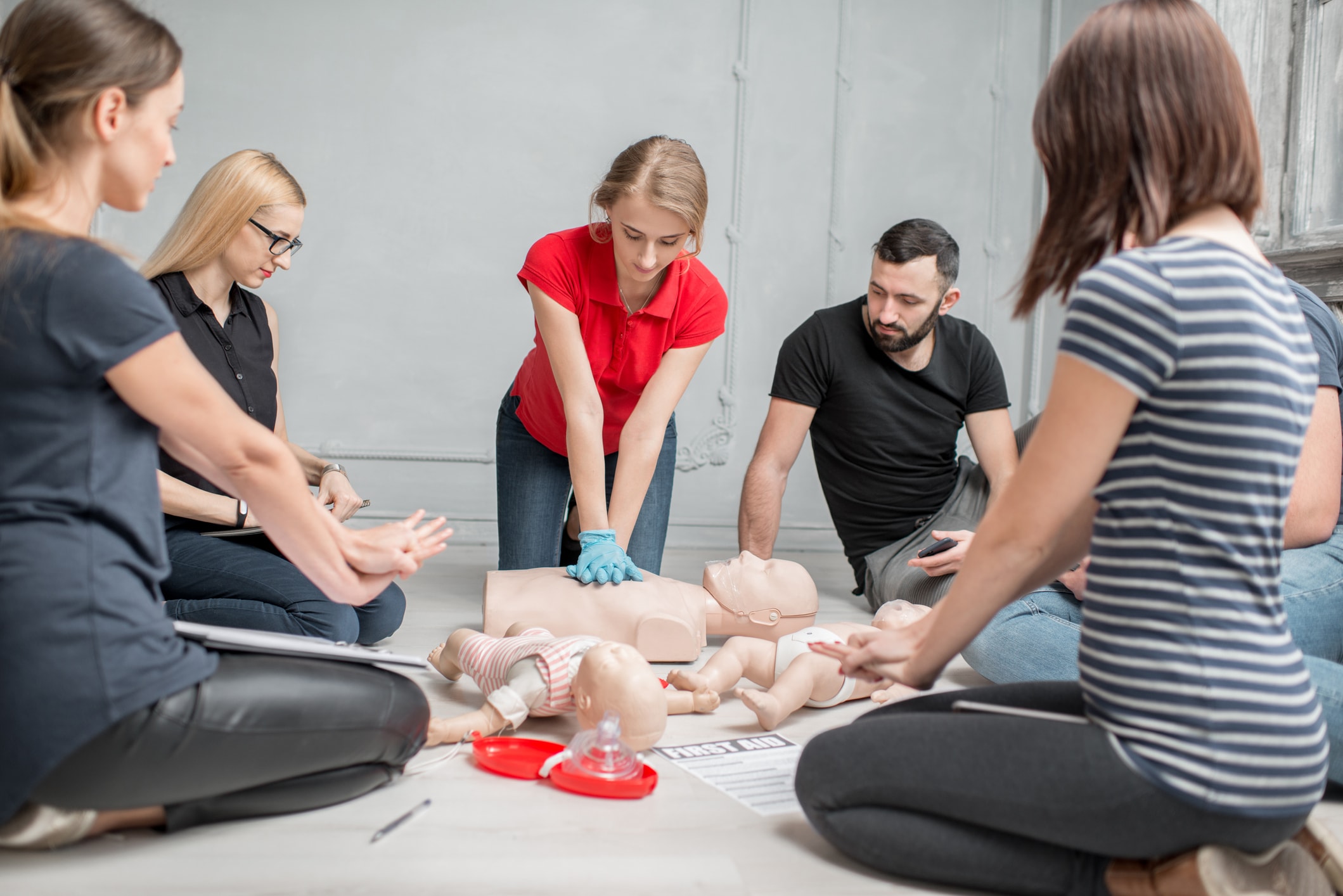In this article
It feels a bit like a cruel joke that your brain is playing on you: Your “easy” baby doesn’t have colic, they sleep well and they’re generally happy and calm. But then they start daycare, and you can’t stop worrying: Will my “easy” baby be overlooked just because they appear to need less attention?
It’s a common concern for parents of these unique, low-maintenance tots. However, even if caregivers do spend more time soothing fussier babies, the quality and focus of the time they spend with your “easy” baby is different, says Dr. Joanna Parga-Belinkie, a pediatrician and neonatologist in Philadelphia, author of “The Baby Bonding Book” and co-founder of Pediatric Health Chat. “Having a baby whom you feel you can care for easily leaves room for bonding and connection,” she adds.
Here childhood development and educational experts share signs your baby might not be getting the attention they need in daycare, signs they are thriving and how to communicate with child care providers about your concerns.
Key takeaways
- It’s common to worry your “easy” baby might be overlooked in daycare, but experts say research doesn’t support that concern, and that your baby may actually become a favorite.
- Signs your baby isn’t getting enough attention at daycare include changes in behavior, basic needs not being met or missed milestones — all worth discussing calmly with caregivers.
- Signs your baby is thriving in daycare are meeting their milestones, establishing secure attachments with their caregivers and confidently exploring their environment.
- If you are concerned your “easy” baby isn’t receiving adequate attention, open, non-confrontational communication with their caregivers will ensure your baby’s individual needs are met while maintaining a supportive daycare partnership.
Will my “easy” baby get less attention in daycare?
When her son started going to daycare at 3 months old, Ashley R., a parent to one in Maryland worried he wouldn’t get the attention he needed. He was often content to play by himself and wouldn’t cry until he was very hungry, so she wondered, “Would he get lost in the shadow of kids with bigger needs?”
“I actually think the opposite direction might be more likely — that caregivers are more likely to form strong bonds and attachments to ‘easy’ babies and provide more sensitive and responsive care,” says Andres Sebastian Bustamante, an associate professor at the University of California Irvine who has experience in early education research.
While he understands the worry parents have, he says he hasn’t come across any research that supports the idea that an “easy” baby might be overlooked in daycare. After all, he adds, “what childcare professional doesn’t love a cooing smiley baby to have a conversation with?”
“High-quality child care creates a safe, nurturing environment where babies build secure attachments with trusted caregivers, laying the foundation for healthy emotional and social development.”
— Gigi Schweikert, parenting and education expert
Parga-Belinkie recalls how her middle son was the “easy” baby. “As a result he made incredible relationships with his caregivers,” she explains. “They were able to spend time enjoying him instead of worrying if he was OK or if they were doing the right thing. Easy babies give caregivers confidence and allow for easy connection.”
Daycares aren’t one-on-one environments so you do have to temper your expectations in that sense. However, “quality infant care is about balancing group dynamics with personalized attention, ensuring every child feels safe, nurtured and supported throughout the day,” says Gigi Schweikert, parenting and education expert and chief executive officer of Lightbridge Academy.
What are signs a baby doesn’t get enough attention at daycare?
If you’re worried your baby isn’t getting enough attention, rest assured that you are not alone. However, it’s important to remember that babies are resilient, and “so long as they are surrounded by caring adults who will respond to their needs when they have them, they should do well in any setting,” says Parga-Belinkie.
But what do you look for if your gut is telling you something is wrong? Here are the signs.
1. Changes in behavior
It’s normal for babies to be fussier at home in the evenings — they’re tired, and they’ve had a big day. But parents know when they aren’t being themselves, says Parga-Belinkie.
“Parents may want to take note if their baby seems consistently withdrawn, unusually fussy or shows little interest in play or connection with caregivers,” adds Schweikert.
2. Basic needs not being met
Because babies are reliant on their caregivers for their most basic needs, start by looking at those, suggests Parga-Belinkie. Ask yourself:
- Are they being changed regularly?
- Are the supplies you sent in for them — milk, diaper creams, wipes and changes of clothes — being used?
- Are they getting sufficient sleep?
- Are minor injuries (i.e. bumps and bruises) being reported and tracked?
3. Not meeting milestones
There’s some wiggle room in what’s considered “normal” for milestone timelines, but it can indicate they’re not getting the support they need if they’re consistently behind. If you notice your baby isn’t “meeting their developmental milestones, it’s time to talk to your pediatrician and to the teachers or daycare administration to find out why and ensure your baby gets the support they need,” advises Parga-Belinkie.
Many pediatric practices utilize the Centers for Disease Control and Prevention’s (CDC) Milestone Tracker (a free app you can access) that helps parents understand what abilities a baby should have at different ages. You can also find resources for tracking and understanding your baby’s development at healthychildren.org.
“Approach situations with open-ended questions and share what works well at home. Listen for how the team balances structure with flexibility and how they communicate updates, so you can stay in sync.”
— Gigi Schweikert
What should daycare do for babies?
So what should you expect in terms of your baby’s physical, emotional and cognitive needs being met at daycare?
“High-quality child care creates a safe, nurturing environment where babies build secure attachments with trusted caregivers, laying the foundation for healthy emotional and social development,” Schweikert adds. Here’s what that looks like.
Address physical needs
When it comes to your child’s physical needs, there are a few basic things you should expect from your daycare provider:
- Your child is fed when they are hungry.
- They are changed when they are dirty.
- They get appropriate sleep.
- They have opportunities for play.
- They receive affectionate interaction.
- They are kept safe.
Additionally, the daycare should create a supportive environment in which your child can meet their developmental milestones. For example, this might look like making sure they have sufficient tummy time during the day (15-30 minutes a day by 7-weeks-old is the American Academy of Pediatrics’ recommendation).
Meet emotional needs
Sensitive and responsive caregiving results in an “emotionally supportive environment where children can build strong attachments and gain their independence,” says Bustamante.
In practice, he adds, this looks like caregivers responding to babies’ sounds, gestures and bids for attention. For example, they show excitement or enthusiasm when the baby screeches with joy and empathy or concern if the baby shows signs of frustration or distress.
Nurture cognitive needs
“Caregivers should create sensory-rich environments for babies to explore and test their ideas like the tiny scientist that they are,” says Bustamante. Additionally, he adds, babies benefit from a rich language environment. This means exposing them to as many words and languages as possible, and giving them the time to respond, in their own way.
Through these rich language interactions and sensory exploration, Schweikert says “child care centers help infants and toddlers develop confidence, communication skills and curiosity.”
How do you ask daycare to give more attention to your baby?
If you and your baby are new to daycare and you’re worried your “easy” babe might be overlooked, Ashley D., a fellow parent to an “easy” baby in Houston, advises maintaining a clear line of communication between you and the caregivers.
“Their goal is to ensure all babies are taken care of, and they will want to do what they can to make the transition into daycare easier for both baby and parents,” she adds.
If your baby is already attending daycare, and your inner alarm bells are ringing, “the best first step is to open a calm, honest conversation with [your] child’s teacher or caregiver,” says Schweikert. During this talk, you can:
- Ask questions. In order to come to a realistic solution or consensus that works for both parties, it’s important to begin the conversation with curiosity, not accusation.
- Share observations. This might sound like: “I’ve noticed Johnny’s naps have been a bit off lately, and I wanted to see if we could talk through his schedule. At home, they usually nap around noon, and that seems to work well. Could you share what their nap schedule looks like here and if you’ve noticed anything different?”
- Discuss daily routines. “Approach situations with open-ended questions and share what works well at home,” says Schweikert. “Listen for how the team balances structure with flexibility and how they communicate updates, so you can stay in sync.”
- Ask how [your] baby is engaged. “Inquire about the kinds of activities, interactions or moments that seem to capture your baby’s attention and how teachers support engagement throughout the day,” advises Schweikert. “This helps you understand how your child is learning, exploring and connecting with others in the classroom.”
- Discuss ways to ensure their individual needs are being met. Here’s one way you can word this from Schweikert: “I know every child is different, and I’d love to hear how you respond to their individual cues around naps, feeding or playing.” You can also share what seems to work well for your baby at home.
“Keeping open lines of communication builds trust and helps create a supportive partnership between parents and caregivers,” Schweikert adds.
“Babies should create strong bonds with their caregivers over time and express positive emotions and excitement when they see them.”
— Andres Sebastian Bustamante, associate professor and early education researcher
What are the signs a baby is thriving in daycare?
“A baby who is thriving in a child care setting will show steady growth in areas like curiosity, comfort and connection,” says Schweikert. But what does that look like in practice? According to the experts, these are some of the signs your baby is doing well in daycare.
Meeting developmental milestones
Monitoring your child’s development is a great way to assess if they are getting the support and care they need, says Parga Belinkie.
She adds that one of the best ways to do so is with the guidance of your baby’s pediatrician. Your daycare may also have their own developmental programs and ways to track your baby’s progress, says Parga-Belinkie, which you can ask to review.
Establishing relationships with caregivers
“This might not happen right away, but babies should create strong bonds with their caregivers over time and express positive emotions and excitement when they see them,” says Bustamante.
If your child reaches for their caregivers, makes eye contact and smiles, those are all good signs that they are “forming secure bonds with their teachers,” Schweikert adds.
And the feeling should be mutual. Ashley R. shares that there have been times that teachers she’s not familiar with will stop her in the hall to tell her son goodbye (by name) and tell her how much they enjoyed feeding and snuggling him, or what silly face he made at them that day.
Confidently exploring their environment
One of the signs your baby is in good hands is if they are “comfortable and confident enough to explore their environment through play, conversation and experimentation,” says Bustamante.
“Even quiet or low-maintenance infants demonstrate thriving by engaging in play and showing interest in their surroundings,” Schweikert explains. “This, along with showing signs of a secure bond with their teachers, shows that your baby “feels safe, cared for and ready to explore.”

